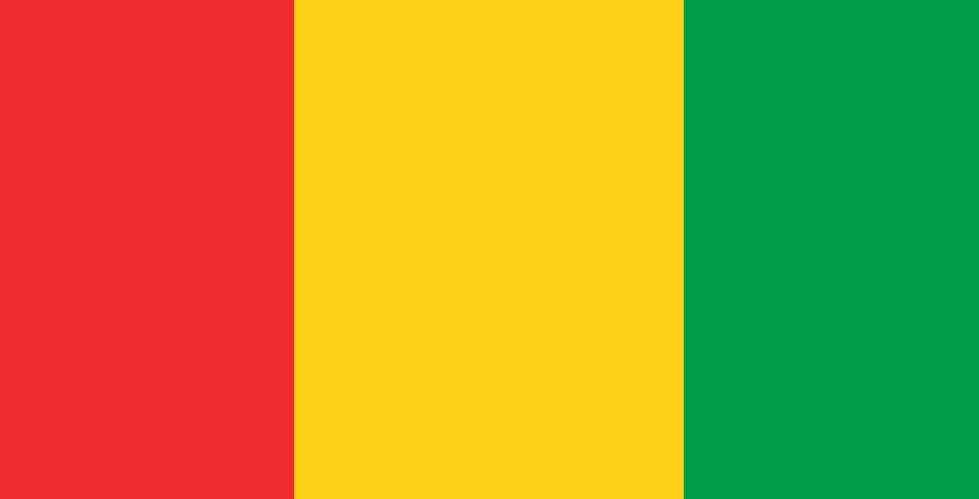Burkina Faso, a landlocked country in West Africa, is known for its vibrant culture and rich heritage. One of the remarkable aspects of Burkina Faso's identity is Burkina Faso National Color: red, green, and yellow. These colors hold great significance and reflect the nation's history, values, and aspirations. In this article, we will explore the origins and symbolism of Burkina Faso's national colors, their cultural impact, and their connection to the Burkinabé people.
Historical Significance of Burkina Faso National Color
The national colors of Burkina Faso have their roots in the country's struggle for independence and its subsequent revolutionary movements. Following its independence from French colonial rule in 1960, Burkina Faso went through a series of political changes that shaped its national identity. The national colors emerged during this period as a symbol of unity, liberation, and progress.
Red: The Color of Revolution
The color red in Burkina Faso's national flag represents the spirit of revolution and sacrifice. It symbolizes the courage and determination of the Burkinabé people who fought for their independence. Red is a powerful reminder of the revolutionary movements that shaped the country's history and the sacrifices made by its citizens.
Green: The Color of Hope and Agriculture
Green holds a significant place in Burkina Faso's national colors, symbolizing hope, fertility, and agriculture. Burkina Faso's economy heavily relies on agriculture, and the color green represents the country's agricultural wealth. It reflects the importance of farming and the natural resources that sustain the nation.
Yellow: The Color of Sunshine and Wealth
Yellow, a color associated with the sun, represents warmth, brightness, and wealth in Burkina Faso. It symbolizes the prosperity and abundance that the country aspires to achieve. Yellow also reflects the richness of Burkina Faso's cultural heritage and its people's desire for a better future.
Combination and Meaning
The combination of red, green, and yellow in Burkina Faso's national colors is a harmonious representation of the nation's values and aspirations. It signifies the unity and diversity of Burkina Faso, bringing together the revolutionary spirit, agricultural heritage, and economic ambitions of the country.
Usage and Display
Burkina Faso's national colors are prominently displayed in various contexts. They are featured on the national flag and coat of arms, which are highly regarded national symbols. The colors are also prominently used during national events, celebrations, and official ceremonies, emphasizing their importance in the country's collective identity.
Cultural Impact of Burkina Faso National Color
The national colors of Burkina Faso have a profound impact on the country's culture and artistic expressions. They are often incorporated into traditional clothing, textiles, and handicrafts, reflecting the vibrant cultural heritage of Burkina Faso. Artists and artisans use these colors as a medium to express their identity, history, and aspirations.
National Colors and Identity
The red, green, and yellow of Burkina Faso's national colors are more than just visual elements; they hold deep meaning for the Burkinabé people. The colors represent a source of national pride and unity, serving as a unifying force that connects people from diverse backgrounds. They are a powerful symbol of identity, resilience, and shared values.
Frequently Asked Questions (FAQs)
FAQ 1: What are the official Pantone codes for Burkina Faso's national colors?
The official Pantone codes for Burkina Faso's national colors are:
- Red: Pantone 485
- Green: Pantone 355
- Yellow: Pantone 109
FAQ 2: Are there any specific occasions when the national colors are prominently displayed?
Yes, Burkina Faso's national colors are prominently displayed during national holidays, Independence Day celebrations, and significant events such as political rallies, sports tournaments, and cultural festivals.
FAQ 3: Do the national colors hold any religious significance in Burkina Faso?
No, the national colors of Burkina Faso do not hold any specific religious significance. They primarily represent the country's history, culture, and aspirations.
FAQ 4: Are there any restrictions or guidelines for using the national colors?
There are no strict restrictions on using Burkina Faso's national colors. However, it is important to use them respectfully and in a manner that honors their significance to the country and its people.
FAQ 5: Have there been any changes or debates regarding Burkina Faso's national colors?
Since their adoption, Burkina Faso's national colors have remained unchanged. However, like any national symbols, there have been discussions and debates regarding their usage and interpretation. These conversations contribute to the ongoing cultural dialogue and evolution of Burkina Faso's national identity.
Conclusion
The national colors of Burkina Faso, red, green, and yellow, encapsulate the spirit, history, and aspirations of the Burkinabé people. They represent the country's revolutionary past, its agricultural wealth, and its pursuit of prosperity. These colors are an integral part of Burkina Faso's cultural fabric, fostering a sense of unity, pride, and shared identity among its citizens.
References
- Burkina Faso - CIA World Factbook. Retrieved from https://www.cia.gov/the-world-factbook/countries/burkina-faso/
- Burkina Faso - Flags of the World. Retrieved from https://flagspot.net/flags/bf.html
- Burkina Faso National Flag and Coat of Arms - Embassy of Burkina Faso in Washington, D.C. Retrieved from https://www.burkina-usa.org/burkina-faso-national-flag-and-coat-of-arms/
